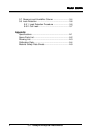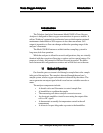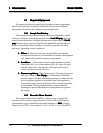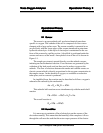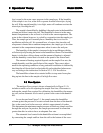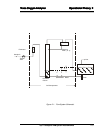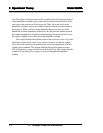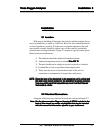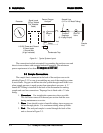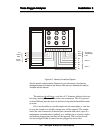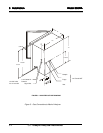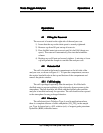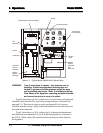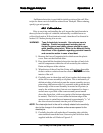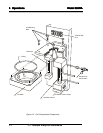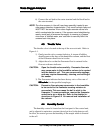
3-2
3 Installation3 Installation
3 Installation3 Installation
3 Installation
Model 356WModel 356W
Model 356WModel 356W
Model 356W
AA
AA
A
Teledyne Analytical Instruments
Figure 2-1 Typical System Layout
The connections include a terminal for grounding the analyzer case and
chassis in accordance with accepted industrial practices. The maximum
power requirement is less than
1½ amperes at 115 VAC1½ amperes at 115 VAC
1½ amperes at 115 VAC1½ amperes at 115 VAC
1½ amperes at 115 VAC.
3.3 Sample Connections3.3 Sample Connections
3.3 Sample Connections3.3 Sample Connections
3.3 Sample Connections
The sample line is connected at the back of the analyzer case as de-
picted in Figure 2-3. Use care in assembling any part of the sampling system
to avoid leaks. Oxygen can diffuse into the system through small leaks even
when sample pressure is much greater than atmospheric pressure. A
1
/8"
female NPT fitting is installed on the back of the instrument for making
sample and vent line connections. Thepurge line is fitted with a
1
/4" tube
fitting.
1.
ConnectorsConnectors
ConnectorsConnectors
Connectors. Use straight tube connectors where possible.
This facilitates removal of the analyzer section from the case
during maintenance or service.
2.
LinesLines
LinesLines
Lines. Lines should consist of metallic tubing, since oxygen can
diffuse through plastic. Use continuous tubing where possible.
3.
VentVent
VentVent
Vent. The analyzed sample is vented through the back of the
unit as shown in Figure 2-3.
Sample
Line
Sample Line
(1/4" or 1/8" Metal Tubing)
Shut Off
Valve
Pressure
Regulator
(5-10 psig Output)
Vent
Condensate Trap
1/4"
Tub ing
Signal Leads
(22 ga. Twisted
Pair Shielded
Cable)
Percent Oxygen
Analyzer
Recorder
115 VAC Power and Ground
2 Power Leads
1 Ground Wire
(16 ga. Insulated)
Vent
Sample
In



